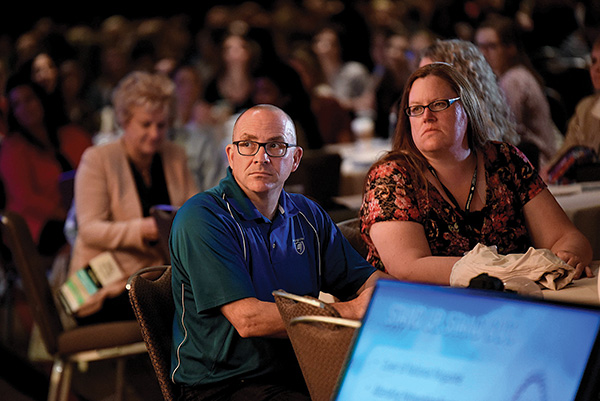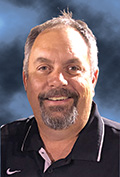July 2019, Vol. 246, No. 7
Features
State of Learning in the Gas Industry
The Midwest Energy Association (MEA) started out over 100 years ago as the Midwest Gas Association (MGA) when a handful of local gas companies gathered in Des Moines, Iowa, to share problems and ideas.
Today, the association serves nearly 100 gas and electric utilities and provides training and eLearning courses for the electric industry. MEA’s goal is to empower the energy industry through education, leadership, development and industry connections. P&GJ visited with some top executives to discuss industry challenges and the training benefits provided by MEA.

Panelists:
Jim Diemer – superintendent Gas Operations & Engineering, Ameren Missouri
John Webster – EIT, RGDP, director Natural Gas Division, Hutchinson Utilities
Jen Holmstadt – senior project manager, WSB
Frederick Toomey – AMI meter specialist, City Utilities of Springfield
P&GJ: What workforce challenges is the industry facing right now?
Diemer: The amount of turnover that is taking place in the workforce both in field employees and management personnel is challenging. A very large percentage of our workforce has less than five years of experience and they are being put into leadership roles replacing people with 30-plus years’ experience.
Webster: Baby boomers are retiring at an alarming rate, and a tremendous amount of knowledge is going out the door and not being captured. The question most utility officials are asking themselves is if the younger employees can be brought up to speed using the same training techniques that we have always used, and, if not, what do we use?
Another major challenge facing the natural gas industry today is the need to keep pace with the ever-evolving technology. Should we embrace the latest and greatest new widget? And how does a utility manage to not only implement the new technology but also train the workforce to be efficient and productive?
Holmstadt: Two issues dominate the discussion around workforce challenges: recruiting new staff and knowledge transfer from retiring staff. On one hand, we have a very knowledgeable, experienced workforce that has so much information to share with newer workers; on the other we have incoming staff with very different work styles and even some new ideas for how things could be done. The challenge organizations have is to facilitate common ground between these groups to learn from one another.
Toomey: A major workforce challenge in the gas industry right now is that some longtime workers are buying time until retirement, while others are spending time changing or avoiding tasks rather than just getting them done safely and efficiently.
P&GJ: How does your company train and educate existing employees as well as the next generation?
Diemer: We utilize a variety of training from classroom training and on-the-job training to demonstrations and simulations. Trying to make the training as close to what is experienced in the field seems most effective. Also, we try to mix newer employees with experienced employee to learn from each other and even have experienced field personnel do some of the teaching to share their firsthand experiences.
Webster: Utilities today cannot afford to train their employees totally in-house. Outside training must be utilized in order to keep abreast of the new trends. In the natural gas industry, employees must first and foremost be trained to perform their duties in the safest and most efficient manner possible. Due to the nature of our business, we must all be able to work with the public in a courteous and thoughtful manner.
We look toward MEA to provide leadership training, interpersonal relationship building, and the operational training required for all our natural gas employees. MEA offers the Gas Operations Technical & Leadership Summit, which provides a mix of technical sessions, hands-on sessions and leadership and personal development sessions.
Holmstadt: We use several methods for employee training. We take advantage of the array of training courses MEA offers for our pipeline inspectors and other staff. We provide our own in-house training for subjects like project management and professional development.
We sponsor brown bag sessions quite often, so that industry experts can share their experience with our staff. We also send staff to events like MEA Gas Operations Technical & Leadership Summit, which provides a great selection of courses for staff to attend, including a leadership track.
Toomey: At our company, we do a lot of in-house training by bringing in vendors or other experts with experience. Then we supplement with outside learning opportunities, like MEA trainings and conferences.
P&GJ: Why does your company continue to send employees to in-person learning events? What value or return on investment do you see?
Diemer: In-person learning events provide opportunities to network with other people in the industry who have similar challenges. MEA conferences and other events allow us to learn from each other as well as create some relationships that can be very beneficial when various challenges arise.
Webster: My utility believes that in-person training, first and foremost, aids employees in taking ownership in his/her own career development. The MEA gas summit also challenges the employee to gain a deeper and broader technical knowledge and build personal relationships with their peers that could assist them in their future.
In-person training lasts. Learning by doing tends to result in better retention over time. Certification that is based on hands-on learning indicates more than just a learner’s capacity to memorize and explain. It demonstrates concrete skills and the ability to combining theory and practice.
Holmstadt: WSB sees tremendous value in sending staff to in-person learning events, like those offered by MEA. The networking opportunities at these events is invaluable. Our staff has the opportunity to meet industry experts, ask questions, and form relationships that will help them be successful in their roles.
Toomey: We send employees to in-person trainings to build relationships and engage with others. The ROI is seen in our ability to build on what other companies do; we gain knowledge and learn from them.
P&GJ: How do you see learning and training changing in the years ahead?
Diemer: I think a variety of methods will be necessary to be most effective. I see augmented reality and virtual reality becoming part of that mix.
Webster: Training methods must evolve like our workforce and technology are evolving. My utility has produced “homemade” videos for numerous natural gas industry tasks that are performed infrequently so employees can watch the videos on their laptops or tablets prior to performing the task when required.
Training also needs to be offered in ways that we have not even though of yet. Currently, MEA is investigating how technologies such as AR/VR can be adapted to and harnessed by the utility industry. That said, even while the digital age of training makes inroads to the natural gas industry, utilities will always rely on the in-person learning and training events from organizations like MEA.
Holmstadt: Our industry is unique in that some types of training will always require in-person attendance. However, younger staff are very comfortable with distance learning techniques, and I believe we will continue to see an increase in demand for these types of offerings. I also see a desire in newer staff for clearly defined career paths with accompanying skillsets, which may further the need for professional development courses like MEA Field Leader Training and online management courses.
Finally, younger employees are very comfortable with technology, so this could drive many changes in how classes are offered beyond what is typically used now. MEA is particularly interested in exploring how new technologies for learning like simulations, and even AR/VR could be used to enhance staff training.
Toomey: We see online training and flex training (work with different shift schedules and offtime) as absolutely necessary. We are also asking the individuals that attend conferences to share their learnings when they come back so we can train the masses. When in-person events are within driving distance, like the MEA Gas Ops Forum in Branson last April, we send as many people as possible. P&GJ
Jim Diemer graduated from Southern Illinois University in 1997 with a bachelor’s degree in civil engineering. He worked at Nicor Gas for 8 years in various operations roles. Jim joined Ameren Missouri in 2005 and has been in various roles - operations, training and compliance program management. He is currently the Superintendent of Gas Operations & Engineering for Southeast & Northeast Missouri.

Jen Holmstadt has been a project manager and geomorphologist in the natural gas industry for over 12 years. She specializes in designing and implementing geohazard risk assessment programs that allow utilities, pipeline operators, and integrity engineers a process for managing environmental risks to pipeline integrity.

Fred Toomey has worked a total 31 years at City Utilities of Springfield on two different occasions. 26 of those years in Customer Engineering, Gas Engineering, Gas Measurement and Gas/Water AMI. His responsibilities in Gas/Water AMI are Research and Development, Quality Control of inventory ordered and installed, training of all areas of installation.

John Webster is a mechanical engineer with 32 years of experience in natural gas transmission, distribution and measurement. He serves as the director of the natural gas division with Hutchinson Utilities. He is responsible for directing all aspects of the natural gas division, including natural gas commodity procurement, engineering and pipeline management.






Comments